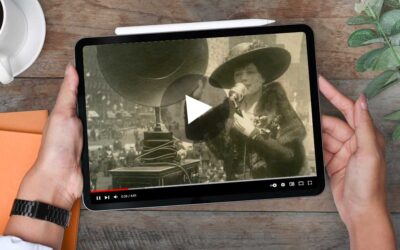3 Strategies for Museum Digital Project Sustainability

Rachael Cristine Woody
Creating sustainability in museum work is a topic I’ve spoken on throughout the years with increasing urgency as the field faces accelerating resource challenges.
While the work may change or evolve, the principles of sustainability stay the same. Museums—like many nonprofits—are under-resourced and cannot perform all the work they wish to do in accordance with their mission. Now, there are a few ways to help temporarily correct the “under-resourced” part, but what it really comes down to is museums are trying to do too much with too little.
1. Attempt to Right-Size
If we can’t correct the “too little” part, we have to try and correct the “too much” part. In this case that means we need to correct the “too much work” part. And if we fail to correct the “too much work” state of operations then the leadership of the museum have failed their staff, collection, and constituents because their current course of “too much with too little” is what leads to staff burnout, brain drain (staff departures), and costly mistakes. This principle is reflected in the most recent Center for the Future of Museums’ annual report: Museum TrendsWatch: Right-Sizing the World. Please see my previous write up on the Trend for more information on the topic and suggestions of how to right-size.
2. Make Your Work More Sustainable
Regardless of the action or inaction of museum leadership, you as a museum staff member do have some autonomy over the work you take on and how you do it. Whether it’s a task, repeatable process, or new project; the following should be performed in an effort to help keep the work at a sustainable level:
- Assess and determine the appropriateness of the task, repeatable process, or new project by comparing the work against the museum mission and/or strategic plan, and your job description.
- Define the scope of work and quantify or qualify outcomes when at all possible, in order to clearly define when an item is considered “done”.
- Complete a resource check to determine if you (and your team) have enough capacity to reprioritize other work in order to make room for this new work. Additionally, evaluate if you have the right equipment, software, and knowledge to perform the work.
- Create clear specifications, rules, best practices, and any other documentation that can be helpful to you and your team performing this work. This helps to ensure that all of the information needed to make the work a success is easily referenceable.
- Work with all relevant parties to put together a planning document that includes a timeline, roles and responsibilities, milestones to hit, and end product deliverables.
- Review the work performed periodically to ensure it meets requirements and re-adjust as necessary.
3. Create Supports to Help Minimize the Work and Brain-Load
Museum digital projects have a lot of moving pieces and they can take both a lot of time and a lot of brain power. Next week’s post will share a few strategies to help alleviate both of these issues and assist in making the work more sustainable for you.
Conclusion
Sustainability is a practice—as in we have to constantly practice at making our work (and our lives) more sustainable. It’s not an easy practice as it means we have to counter our impulses to “just do one more thing” to help pitch in, it means we have to create boundaries, and it means we have to be crystal clear to ourselves and others regarding what it is that we do and how we do it. The benefit of cultivating your sustainability practice is that it leads to a better work life balance, it helps alleviate chronic stress and anxiety, and it helps to ensure that the work you do perform is receiving the best of your attention.
Additional Reading
The Importance of Sustainable Museum Cataloging & How to Achieve It
How to Build Sustainability into Museum Digital Projects

Rachael Cristine Woody
If you’d like to learn more about this topic, register here for Rachael’s webinar, “Sustainable Project Management for Museum Digital Projects” on August 24, 2022. Rachael Woody advises on museum strategies, digital museums, collections management, and grant writing for a wide variety of clients. In addition to several titles published by Lucidea Press, she is a regular contributor to the Think Clearly blog and an always popular presenter.
Never miss another post. Subscribe today!
Similar Posts
Captivating Story Delivery with a Multimedia Player
My recent posts reviewed how museums can use storytelling tools provided by their Collections Management System (CMS)—including zoom tools, slideshows, and flipbooks—as strategic storytelling aids. Each of these tools capitalize on being highly visual and offer...
How to Use Slideshows and Flipbooks to Offer Engaging Museum Story Visuals
Museums thrive on storytelling, and the right digital tools can make all the difference. Slideshows and flipbooks offer an engaging way to showcase collections, drawing visitors in with dynamic visuals and interactive elements.
Zooming Into Story Details:
How Museums Can Enhance Storytelling with Visual Tools
Visual tools such as zoom are crowd pleasers when presenting visual content online, allowing museums to create immersive and engaging digital experiences.
7 Digital Storytelling Elements That Live In Your Museum CMS
A museum’s Collections Management System (CMS) is more than just a catalog—it can also serve as a foundation for digital storytelling. By leveraging the rich object data and images already housed in the CMS, museum professionals can experiment with new ways to craft compelling narratives. In this article, Rachael Cristine Woody explores how different types of digital surrogates can bring museum collections to life online.




Leave a Comment
Comments are reviewed and must adhere to our comments policy.
0 Comments